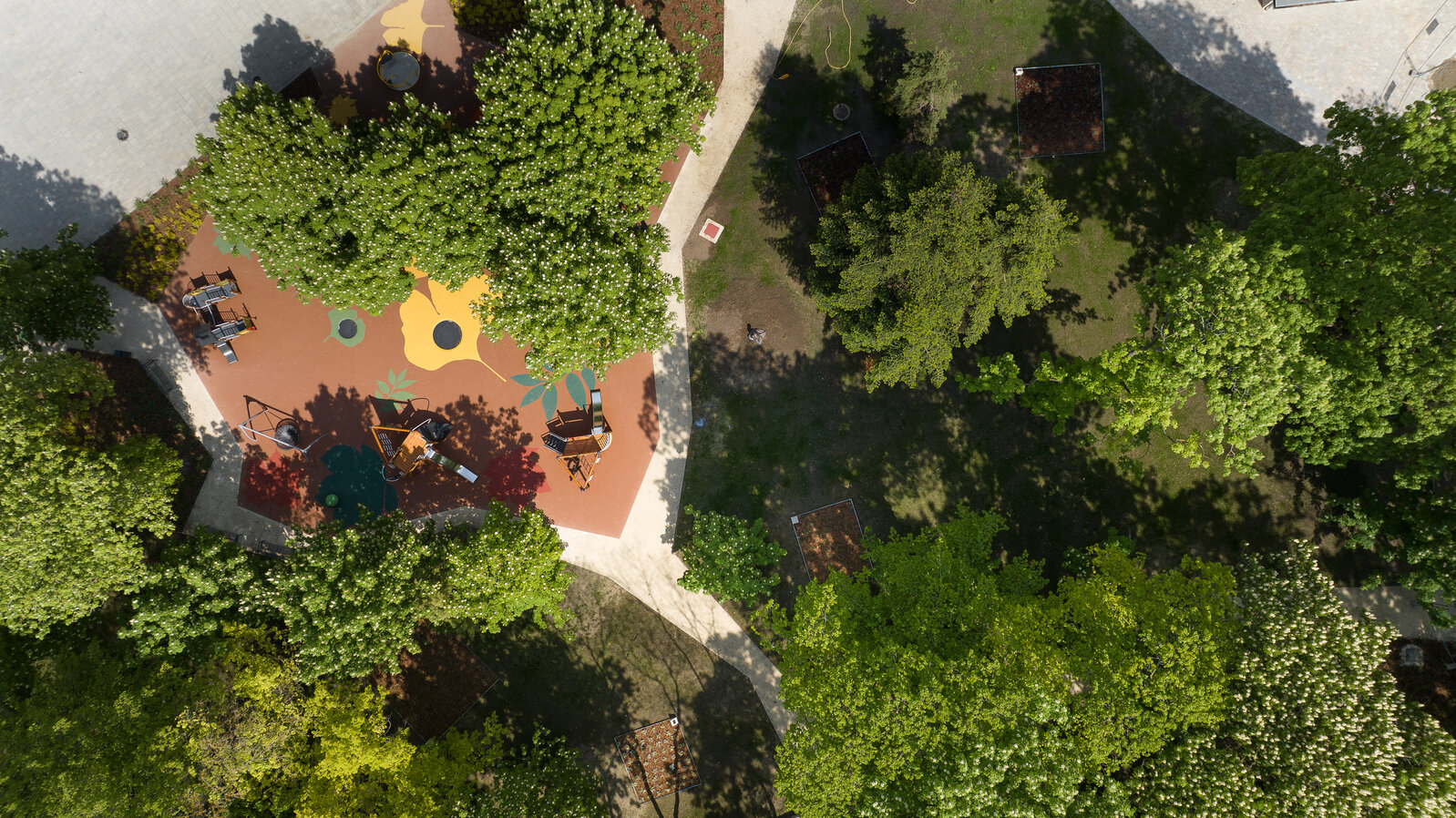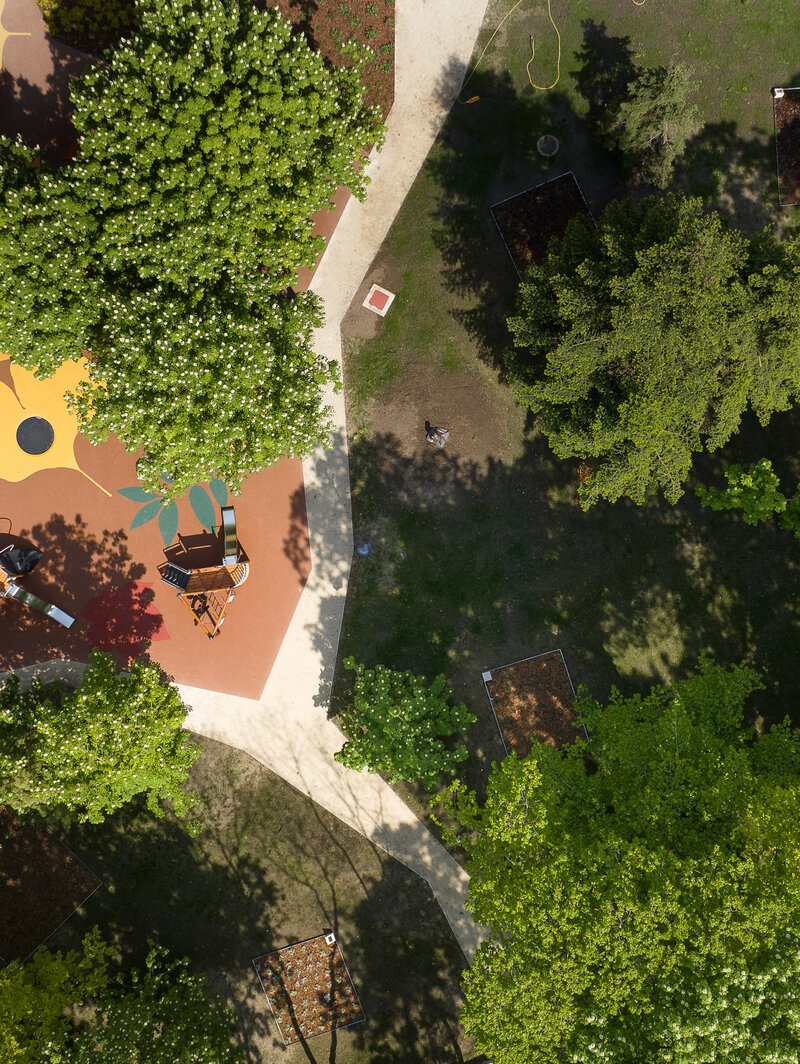Green City project - Veszprém


The planning area is located in the centre of Veszprém, in the area bounded by Egyetem utca - Megyeház tér - Elisabeth Promenade - Elisabeth Grove. Several institutions important for the city are directly adjacent to the area of intervention. Petőfi Theatre and Eötvös Károly County Library are located in Bishop's Gardens; County Hall, Csermák Antal Music School and Laczkó Dezső Museum are located along Elisabeth Promenade; and the ruins of St. Nicholas' medieval church are located on Calvary Hill, in the immediate vicinity. The University of Pannonia Campus forms a significant boundary of the area. One of the aims of the development is to link the green space of the institutions and the area of action, bringing this important part of the city centre to life. The landscape architecture concept for the whole area is a complex proposal that prioritises open space and park uses, while also satisfying recreational and representational needs.
The area can be clearly divided into three main units:
- Calvary Hill area,
- Elisabeth Promenade area,
- Elisabeth Grove area
The area between Calvary Hill and Laczkó Dezső Museum has been defined as a pedestrian traffic and event area. At the junction of the paved and vegetated surfaces of the area, strips of scattered paving have been created. These lanes are a cross-cutting element of the overall development concept. The staircase and ramp to the church ruins on the hilltop are aligned with the axis of the main entrance to the museum. In keeping with the architectural concept, walkways have been created along the renovated retaining wall.
In the south-western part of the square, a pavilion-like building with a café has been constructed in connection with the planned event space. The small building, with its restrained use of materials and simple but characteristic massing, contrasts well with the former retaining walls and the green surroundings of Calvary Hill, and also evokes the former built-up area.
The café is the starting point of a wall walkway that follows the existing retaining walls of the former building under the Calvary Hill, overlooking Komakút Square and Megyeház Road, and provides an alternative, barrier-free pedestrian connection from Elisabeth Square to Egyetem Street and St. Nicholas' Church. The paved walkway runs along the inner side of the reinforced/reinforced retaining walls for a while, replaced by a metal cantilever ramp on the outer side of the wall in front of the World War II memorial, ending with a paved pedestrian ramp at Egyetem Street, where the section is partially backfilled to the retaining wall. The Wall Walkway, together with the Café - Lookout Terrace, was intended to create a new identity-defining element of Calvary Hill as the focal point of the development.
In the Elisabeth Grove area, the green space was renewed, with new shrub and bulb planting in addition to the management of existing plant areas.
St. Nicholas' Calvary - Infrastructural renovation and functional extension of the hill and its surroundings:
- Improvement of accessibility to St. Nicholas' Church ruins, presentation of the ruin garden as a cultural attraction, provision of an exploratory footpath, creation of an event area in the recreation garden (e.g. music pavilion, stage), modification of the motor vehicle parking area;
- Extension of the recreation area in the lobby of Laczkó Dezső Museum (e.g. music pavilion, stage);
- Extension of the ethnobotanical garden of Bakony House;
- Extension of Elisabeth Promenade, which can be extended to include a community space with a playground for children and an events garden.
Calvary Hill and its surroundings could be an excellent venue for presenting and selling local products, presenting local heritage and traditions, organising health promotion and sports events, activities to strengthen local identity, joint events between neighbourhoods and their communities, talent assessment and care, expanding the range of cultural and artistic activities on offer to the community, and complex programmes based on the family as a basic unit of society.

